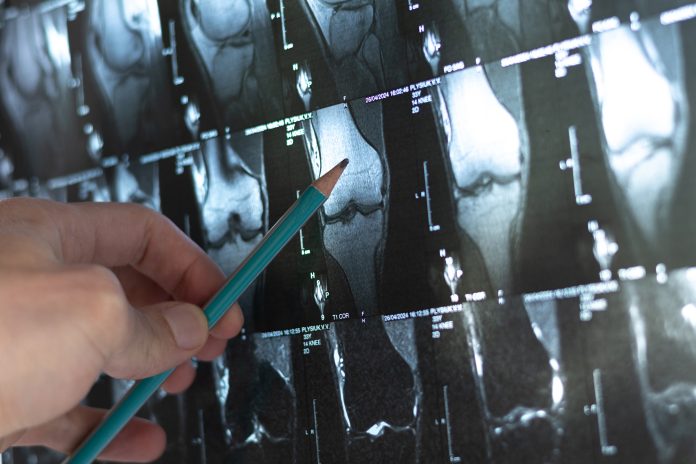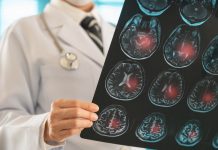NHS England will benefit from 13 new DEXA scanners to support osteoporosis and provide 29,000 extra scans
The new bone scanners are part of the government’s Plan for Change, marking a crucial step towards solving problems within the NHS and making it fit for the future. More than one in three women and one in five men will experience a fracture due to osteoporosis in their lifetime, and these scanners are equipped with advanced technology to check for brittle bone conditions.
Supporting early diagnosis of osteoporosis
Osteoporosis affects both women and men. Women are more at risk of developing osteoporosis than men because the hormone changes that happen at menopause directly affect bone density. The female hormone oestrogen is essential for healthy bones. After the menopause, oestrogen levels fall. This can lead to a rapid decrease in bone density.
The cause of osteoporosis in men is unknown in most cases. However, there’s a link to the male hormone testosterone, which helps keep the bones healthy. Men continue producing testosterone into old age, but the risk of osteoporosis is increased in men with low levels of testosterone.
Bone scans are vital for the early diagnosis of osteoporosis, which is crucial in preventing severe fractures—particularly in the hip, spine, and wrist—that can lead to long-term disability and loss of independence. Detecting osteoporosis before significant bone loss occurs allows for timely treatment with medication, nutrition, and lifestyle changes, all of which can slow or even stop the progression of the disease.
Supporting under-resourced and rural communities
Thirteen areas will receive the new equipment this year, including hospitals in West Yorkshire and North East Lincolnshire serving some of the most under-resourced and rural communities, with patients already receiving invitations for appointments to use the new scanners.
Seven new machines will enable trusts to offer new or extended DEXA services, improving access and reducing patient journey times. Another six scanners will replace existing machines, helping to increase the reliability and productivity of bone diagnostic services.
Health and Social Care Secretary Wes Streeting said: “Having seen the pain of a family member breaking a hip because of her osteoporosis, I know only too well how debilitating a condition it can be.
We know that early diagnosis of brittle bone conditions means faster treatment and better outcomes for patients, which is why I promised before the election that we would deliver an extra 15,000 scans a year. The investment the government is making in new scanners across the country will deliver an extra 29,000 scans a year, almost double what I promised.
Our Plan for Change is cutting waiting lists by investing in our NHS, which is only possible because of the increase in employers’ national insurance.”
Sue Mann, Clinical Lead for Women’s Health at NHS England, said: “This is a welcome targeted investment for the NHS Trusts across England set to receive these new scanners from this month – they measure tiny reductions in bone density that can help us diagnose osteoporosis in its early stages before you break a bone.
These scanners are key tools for prevention, particularly for some women who are known to be at higher risk of osteoporosis, such as those who go through early menopause.”
Craig Jones, Chief Executive of the Royal Osteoporosis Society, said: “This investment in scanners is really good news for people with osteoporosis. We want to thank Wes Streeting for ensuring bone scans are part of his package to modernise scanning technology so we can catch diseases like osteoporosis earlier.
This, and the recent good news on waiting lists, gives us confidence the NHS is beginning to turn a corner.”
Haitham Hamoda, Trustee and Past Chair of the British Menopause Society, said: “This is very welcome news. Osteoporosis and related fractures are a significant public health issue. It is estimated that more than one in three women may sustain an osteoporosis-related fracture with significant associated morbidity and mortality.
In addition, women with premature ovarian insufficiency and early menopause have a significantly increased risk of osteoporosis and related fractures. Increasing access and availability to bone density screening and assessment will improve detection and allow earlier discussion of preventative measures and treatment.”
Dr Katharine Halliday, President of the Royal College of Radiologists, said: “We welcome the pledge for more DEXA scanners which will help to deliver better care for patients at risk of osteoporosis.
Increasing capacity to deliver scans in the hospitals and regions that need it most will be an important step to make sure patients receive timely, effective care no matter where they live.”
Responding to the government’s announcement that 29,000 extra bone scans a year will be delivered for patients across England as part of the government’s Elective Reform Plan, Matthew Taylor, chief executive of the NHS Confederation, said: “Investing in modern equipment is essential to boosting productivity and improving patient care. Scanners like these will play a crucial role in speeding up the diagnosis, intervention and management of osteoporosis, which improves the health of patients and is more cost-effective for taxpayers.
“Our members welcomed the capital funding boost announced in the last Budget as a major first step to improving the outdated infrastructure and shortage of diagnostic equipment caused by a decade of underinvestment. But this was still at least £3.3bn a year short of what NHS leaders say is needed to address this historical lack of funding and plug the productivity gap.
“That is why we hope the government will use next month’s Spending Review to increase NHS capital investment and that the forthcoming National Infrastructure Strategy will open up much-needed new routes for mutual investment from the private sector.”








